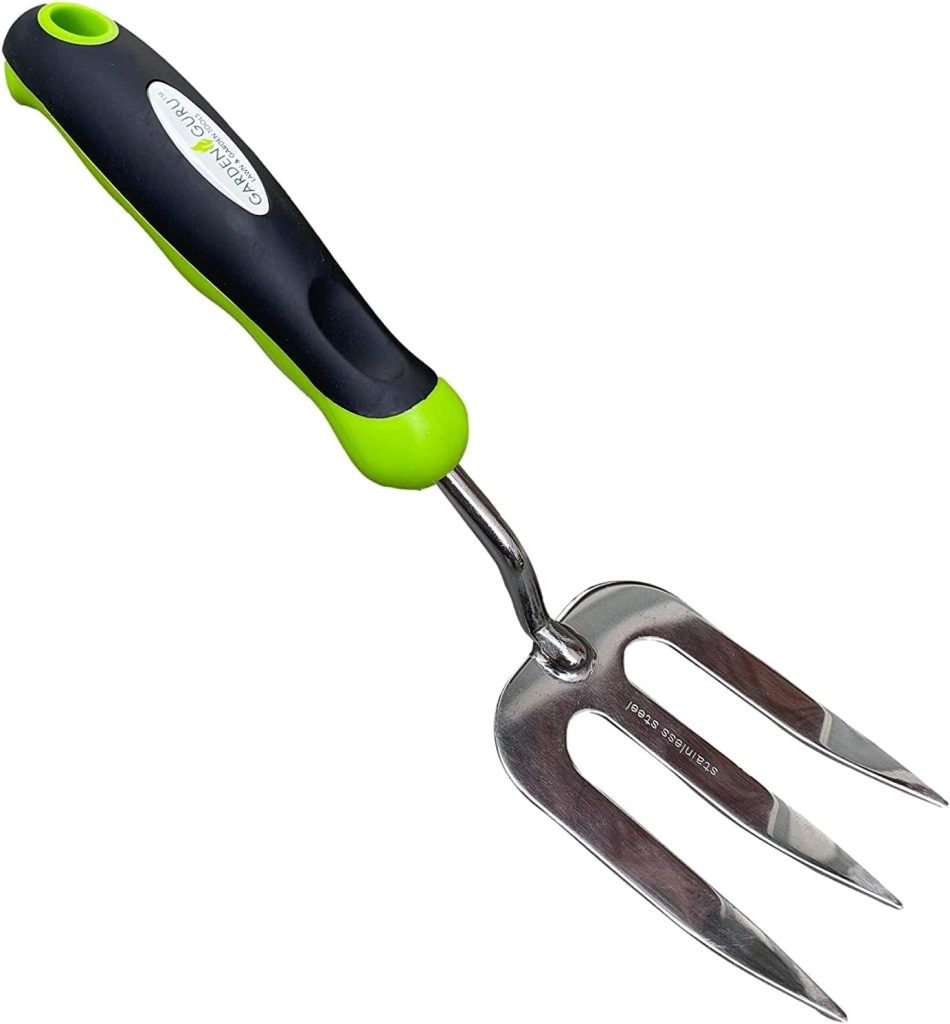Garden Forks
*As an Amazon Associate, I earn from qualifying purchases. Please see our disclosure to learn more.
Garden forks are hand tools with a handle and several sturdy tines (prongs) which are suitable for loosening, turning, and lifting soil in gardening and farming tasks.
The tool’s other names include spading fork and digging fork.
Uses of Garden Forks
A garden fork is essential for various gardening activities including:
- Digging: Forks are useful for breaking up compacted soil and turning it over to aerate and prepare for use.
- Lifting and turning soil: The fork’s tines make it easier to lift and turn soil, helping to mix in compost or other amendments.
- Harvesting: You can use the fork to gently lift root crops, like potatoes and carrots, from the soil without damaging them.
- Clearing debris: It is suitable for loosening and lifting up weeds, rocks, or other debris from the soil.
- Composting: Turning compost using these forks helps aerate the compost pile, facilitating the decomposition process.
Types of Garden Forks
Forks for gardening come in different designs. This includes broadforks with wider tines for larger areas and border forks with narrower tines for more confined spaces.
The design of the tool may vary based on its intended use. Some versions may have additional features such as ergonomic handles for comfortable use. Choose the right fork depending on the task and the type of soil you’re working with.
Handling Safety
Handling garden forks safely is important to prevent accidents and injuries. Here are some safety tips to keep in mind:
- Wear appropriate protective gear: Use closed-toe shoes or boots, gloves, and safety glasses.
- Inspect the garden fork: Check the fork for any damage, such as bent tines or a loose handle. Ensure that the tool is clean and free of rust, which could compromise its strength.
- Proper grip: Hold the tool with both hands, one on the handle and the other near the fork head for better control. Keep a firm grip on the handle but avoid gripping too tightly.
- Keep hands and feet clear: Be aware of the position of your hands and feet when using garden forks. Keep your hands away from the tines and your feet clear of the area where you are working.



Comments are closed.